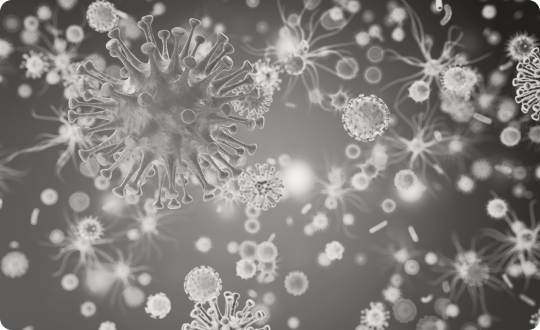PATHOGEN INACTIVATION
Protect Patients From Bacterial Risk
The Hidden Danger in Platelet Transfusions
Bacterial contamination of blood components is most problematic for platelet concentrates (PC) as the storage conditions are ideal for bacterial growth. While storage conditions for therapeutic plasma and red blood cells are less likely to promote bacterial growth, contaminated units can still pose a serious threat to patient safety.
How common is bacterial contamination?
On average ~1/950 Platelet Concentrates (PC) are contaminated by bacteria and ≥25% – 41% of contaminated PC can cause sepsis, however only 10% of suspected septic transfusion reactions can be investigated and confirmed, with sepsis cases underestimated by a factor of ten in passive haemovigilance systems.1,2
~1/950 PC are contaminated by bacteria*
*Considering 50% sensitivity of bacterial screening
>1/150 patients are exposed to bacterial contamination through PC transfusions*
*Considering an average of 6 PC-transfusions per patient
≥25 – 41% of contaminated PC can cause sepsis
Only 10% of suspected septic transfusion reactions can be confirmed
Sepsis is the systemic response of the body to a bacterial infection which can result from the transfusion of a contaminated blood component. Onset is often sudden and severe. Early symptoms can include fever and chills, and as the sepsis progresses can include tachycardia, respiration problems and hypotension. A septic shock can cause the death of a patient.
No level of bacterial contamination in PC can be considered safe for the patient
Webinars
Learn more about bacterial risk



You may also be interested in
References:
- White SK et al., 2020. Bacterial contamination rate of platelet components by primary culture: a systematic review and meta-analysis. Transfusion 60: 986-996
- Hong H et al., 2016. Detection of septic transfusion reactions to platelet transfusions by active and passive surveillance. Blood 127: 496-502
There is no pathogen inactivation process that has been shown to eliminate all pathogens. Certain non-enveloped viruses (e.g., HAV, HEV, B19, and poliovirus) and Bacillus cereus spores have demonstrated resistance to the INTERCEPT™ process. For a full list of warnings, precautions for use and pathogens inactivated, please refer to the Technical Data Sheet and Instructions for Use found in the resource section of this website.




